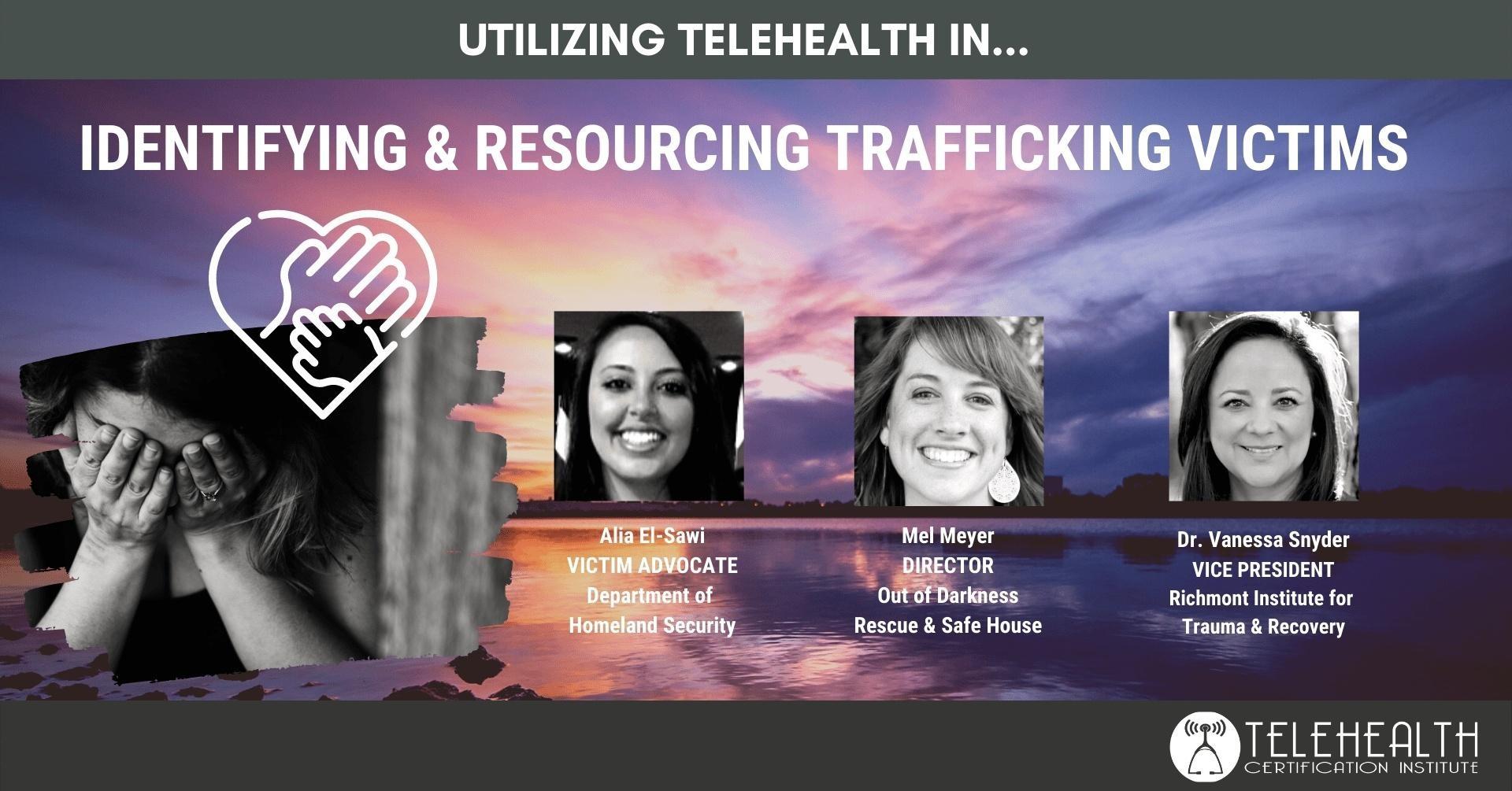In September 2020, the Telehealth Certification Institute hosted a webinar titled, “Identifying and Resourcing Trafficking Victims” which featured leading voices in the field of anti-trafficking. This webinar sought to equip practitioners from multiple disciplines to identify trafficking victims both virtually and in-person as well as provide resources to access critical, trauma-informed care. This webinar also included CE hours for mental health professionals and covered information such as signs of trafficking, best practices for trauma care, how to be an effective mental health professional with trafficking survivors, and how to build therapeutic trust with trafficking survivors. Participants had the opportunity to submit their questions throughout the session and the panelists answered them live during the webinar.
This event’s panelists included:
- Alia El-Sawi, who has been working in the field of anti-trafficking for almost fifteen years and currently serves as a victim assistance specialist with the Department of Homeland Security Investigations.
- Mel Meyer, who has been working with the Atlanta Dream Center’s “Out of Darkness” (anti-trafficking department) for seven years and has a background in juvenile justice programs for at-risk youth.
- Dr. Vanessa Snyder, who is a professor at Richmont University, director of Richmont Trauma Center, and serves as the international consulting director for an anti-trafficking organization called “Uncaged.”
Each speaker tackled pertinent information for providing trauma-informed care to survivors. Alia El-Sawi defined human trafficking specifically as, “Any individual who is in an exploitative situation which incorporates the elements of force, fraud, or coercion and includes exploitation for sex or exploitation for labor.” When we think of human trafficking, we often think of girls being kidnapped in a grocery store parking lot and then exploited for sex or smuggling individuals across the border. Alia El-Sawi highlighted the differences between kidnapping, smuggling, and human trafficking in her definition. Mel Meyer addressed various factors that make some more vulnerable to trafficking than others. Some factors which she addressed included childhood sexual abuse, family instability, and poverty. Dr. Vanessa Snyder discussed why identifying human trafficking victims could be complex. She explained that victims often do not self-identify and that it’s challenging to identify victims virtually because it is harder to recognize body language cues or external factors through a video screen. Each speaker gave practical tips and red flags to look for in identifying trafficking victims. Some red flags listed include using highly sexualized language, a high priority on sexual activity, discussing topics that are not age-appropriate, and poor hygiene. Dr. Vanessa Snyder explained that it is important to understand that human trafficking survivors might not trust you immediately or even be thankful for your care. She described that it is of utmost importance to build and maintain a safe, trusting relationship in the clinical environment.
An hour and a half was not enough time to address the complex topic of human trafficking, but attendees walked away with practical knowledge for identifying and resourcing trafficking survivors in a virtual environment. While there is not a one-size-fits-all method for trauma therapy for those who have been trafficked, one of the most significant takeaways from the panelists is that it is critical to learn to be a good clinician by fostering trust and safety with the survivor. Mental health professionals and educators have the opportunity to be a safe space and a beacon of hope for those who have faced deep trauma as a result of trafficking. Fortunately, one does not have to work in the field of mental health to help out. When asked about practical steps that the average citizen can take to combat human trafficking, Mel Meyer suggested finding resources through the National Human Trafficking Hotline. She also suggested getting involved with a local task force and collaborating with nearby professionals so that if the need arises, one can help survivors access trauma therapy and care.
We are grateful for the invaluable information our speakers presented on trafficking, trauma, and the vulnerable populations at risk for both. Thank you to all who attended and continue to advocate on behalf of others. If you missed this live event, we encourage you to watch the recorded webinar for free or register for the CE course.
By: Jessica Sweigert




The course was so informative and I was glued to my screen for the entire duration. I received so much knowledge concerning ethics in telehealth and I am greatly encouraged to read about all the standards and policies that pertain to my practice. Thank you!.